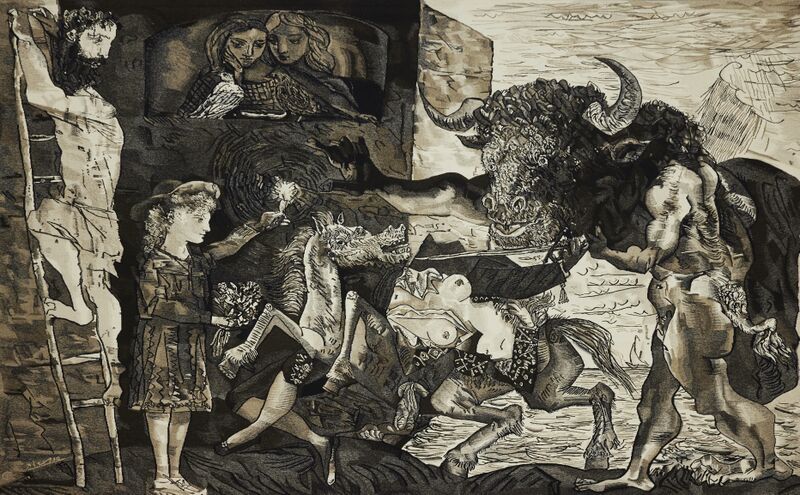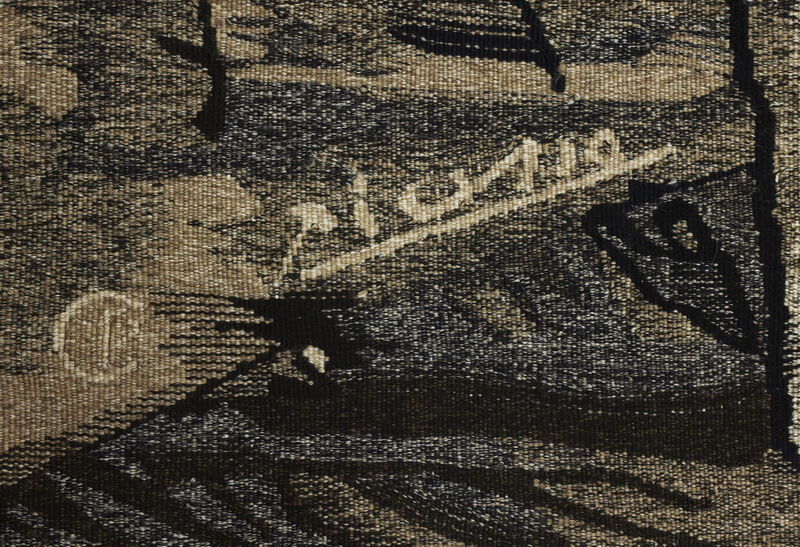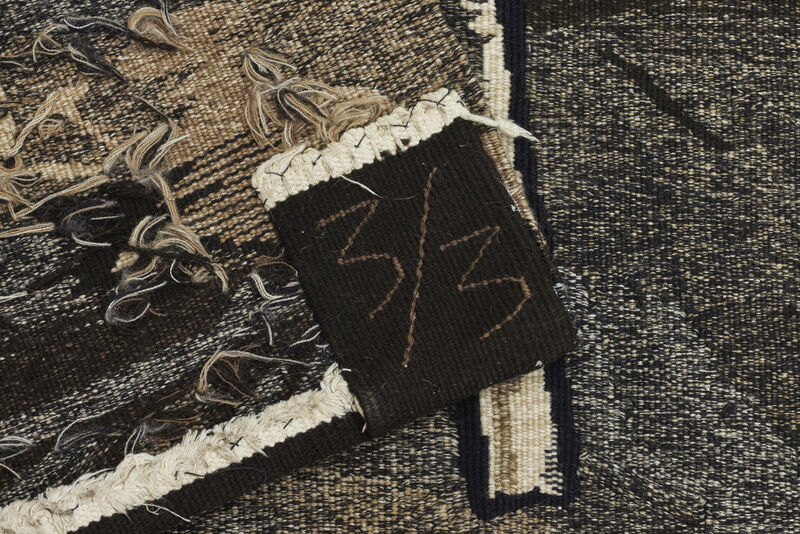Pablo Picasso
(Spanish, 1881-1973)
La Minotauromachie
conceived as an etching in 1935; woven in 1991 by Yvette Cauquil-Prince’s atelier
wool and cotton tapestry; edition 3 of 3
315 x 450 cm (124 x 177⅛ in.)
signed ‘Picasso’ and with Yvette Cauquil-Prince’s atelier monogram (lower left); numbered ‘3/3’ (on the verso)
Yvette Cauquil-Prince atelier, Paris
Thence by descent
O. Le Bihan (exh. cat.), Chagall, de la palette au métier, Musée d’Art moderne, Troyes, 2014, p. 206 (illustrated)
Vera de Moncayo, Monasterio de Veruela; Casco Antiguo, Palacio de Sastago, Yvette Cauquil-Prince, Taller de Tapices: Brassaï, Cauquil-Prince, Chagall, Ernst, Hecq, Kandinsky, Klee, Léger, Matta, Picasso, 1993 (illustrated)
Karuizawa, Musée d’Art Mercian, Tapisseries de Peintres, Chagall, Ernst, Kandinsky, Klee, Léger, Picasso, Yvette Cauquil-Prince Maître d’Œuvre, 1996, pp. 52-53 & 59, no. 19 (illustrated)
Vienna, Kunsthaus, Meister des 20. Jahrhunderts, Tapisserien: Hommage an die Meisterweberin Yvette Caquil-Prince, 2000, p. 127 (illustrated)
Sarrebourg, Musée du Pays de Sarrebourg, Tapisseries d'Yvette Cauquil-Prince, 2005, pp. 36, 76 & 80 (illustrated)
Sarrebourg, Musée du Pays de Sarrebourg, Yvette Cauquil-Prince: Liens tissés avec Chagall, Picasso, Ernst, 2017–2018, p. 102, no. 59 (illustrated)
Vilnius, Museum of Applied Arts and Design, Chagall, Picasso, Ernst: Keramika ir gobelenai, 2024, pp. 102-03 (illustrated)
Woven by Yvette Cauquil-Prince, La Minotauromachie is part of a tapestry series that is an exact adaptation of Picasso’s Minotauromachie engraving; executed in 1935, the work is one of his most emotionally harrowing works. The provocative scene, full of symbolic content, is difficult but not impossible to interpret. Several actions take place in a narrow, confined space; the main protagonists—a young girl with a candle and a bouquet of flowers, and a huge Minotaur, a mythological creature with a human body and a bull's head—appear frozen in confrontation. Between them a wounded female bullfighter is flung across a lacerated horse that snarls with teeth bared. Above, two girls with doves, symbols of peace, peer out from a window, while a bearded man appears on a ladder at the left. A tiny sailboat can be glimpsed on the far horizon.
Executed when Picasso's personal life was in turmoil and he had ceased to paint, La Minotauromachie presents a deeply private mythology. Not only was his marriage to Olga Khokhlova troubled at the time, but he was also ambivalent about the pregnancy of his young mistress, Marie-Thérèse Walter, whose facial features are similar to those of the female figures. The paradoxical Minotaur, the bull-man, was a frequent theme for the artist during this time.
This disturbing and violent representation is also prophetic of the Spanish Civil War, which began in 1936, a year after this print was executed. La Minotauromachie served as a visual source for Guernica, Picasso's famous mural of 1937 about that conflict, which contains some of the same imagery that is seen here.
Price:
POA
More artworks by Pablo Picasso ▶
You may also like:
Enquire Now
Fill in the form below and we will respond as soon as possible.
Make an offer
Fill in the form below and we will respond as soon as possible.



